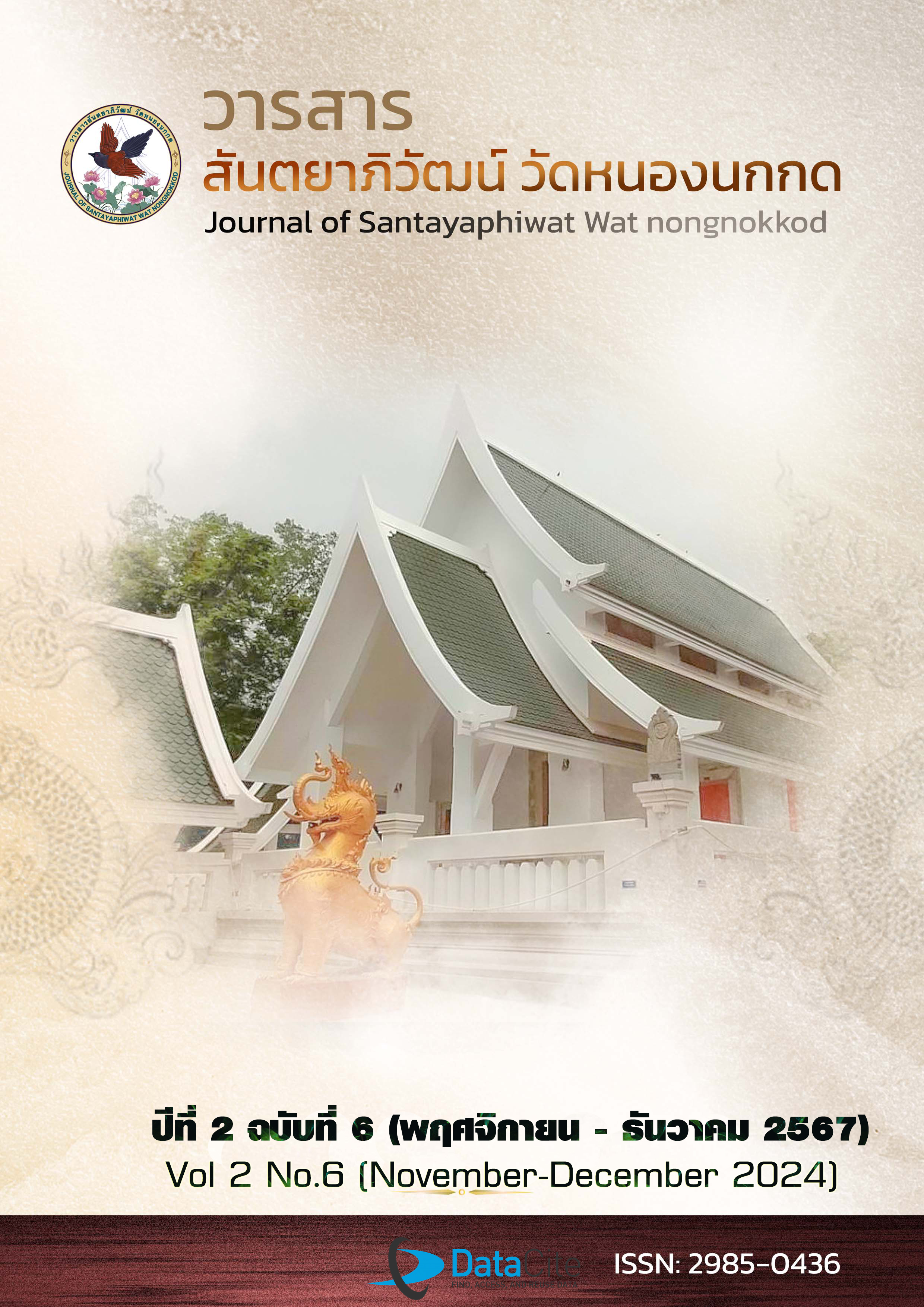THE COMPSRISON OF THAI LANGUAGE LEARNING ACHIEVEMENT REGARDING TYPES OF WORDS IN THE THAI LANGUAGE USING THE CIPPA MODEL OF MATHAYOM 1 STUDENTS METTA SUKSA SCHOOL UNDER ROYAL ROYAL PATRONAGE
Keywords:
Thai word types, CIPPA ModelAbstract
This research aimed at the following objectives: 1) to test the efficiency of the Thai word types skill training form of Mathayom 1 students of Metta Suksa School under the Royal Patronage according to the standard criteria of 75/75; 2) to compare the achievement in Thai word types using the CIPPA Model learning management of Mathayom 1 students of Metta Suksa School under the Royal Patronage before and after studying; and 3) to study the opinions of Mathayom 1 students toward the learning management using the CIPPA Model learning management. The sample group was Mathayom 1 students of Metta Suksa School under the Royal Patronage by simple random sampling. The research design was a quasi-experimental research with a single group experimental method to measure the results before and after the experiment (One group Pretest - Posttest Design). The research instruments included the lesson plan, the pre- and post-tests, and the students’ opinions questionnaire. Data were analyzed using basic statistics, including mean, standard deviation, percentage, and t-test Dependent Sample.
The research results found that 1) The efficiency test of the Thai word type skill training of Mathayom 1 students at Metta Suksa School under Royal Patronage was 80.50/80.50, which was higher than the standard criteria of 75/75. 2) The learning achievement of Thai word types using the CIPPA Model learning management of Mathayom 1 students at Metta Suksa School under Royal Patronage after studying was significantly higher than before studying at the .05 level. 3) The opinions of Mathayom 1 students on the CIPPA Model learning management were at the highest level.
References
กมลฉัตร กล่อมอิ่ม. (2560). การจัดการเรียนรู้แบบการใช้ปัญหาเป็นฐาน (Problem Based Learning): รายวิชาการออกแบบและพัฒนาหลักสูตร สำหรับนักศึกษาวิชาชีพครู. วารสารบัณฑิตศึกษามหาวิทยาลัยราชภัฏ วไลยอลงกรณ์ ในพระบรมราชูปถัมภ์, 11(2),179 - 192.
กระทรวงศึกษาธิการ. (2542). พระราชบัญญัติการศึกษาแห่งชาติ พ.ศ. 2542. เรียกใช้เมื่อ 12 มกราคม 2567 จาก https://shorturl.asia/3sE5P
ชัยวัฒน์ สุทธิรัตน์. (2562). 80 นวัตกรรมการจัดการเรียนรู้ที่เน้นผู้เรียนเป็นสำคัญ. (พิมพ์ครั้งที่ 8). นนทบุรี: บาลานส์ดีไซน์แอนปรินติ้ง.
ชุติมา ทองคณารักษ์. (2559). การพัฒนาแบบฝึกทักษะทางภาษา เรื่องชนิดของคำในภาษาไทยชั้นประถมศึกษาปีที่ 6 โรงเรียนบ้านหนองไทร อำเภอนาโยง จังหวัดตรัง. เรียกใช้เมื่อ 12 มกราคม 2567 จาก http://web.itectrang1.com/29085022
ทิพยฉัตร พละพล. (2561). การพัฒนาชุดการสอนภาษาไทย เรื่อง ชนิดของคำ สำหรับนักเรียนชั้น ประถมศึกษาปีที่ 6. ใน วิทยานิพนธ์ครุศาสตร์มหาบัณฑิต. มหาวิทยาลัยราชภัฏนครสวรรค์
ธรรมกีรติ บวบมี (2565). การพัฒนาผลสัมฤทธิ์ทางการเรียนวิชาภาษาไทย โดยการจัดการเรียนรู้รูปแบบการสอนแบบซิปปา (CIPPA MODEL) ร่วมกับเทคนิคเกมมิฟิเคชัน (Gamification). เรียกใช้เมื่อ 12 มกราคม 2567 จาก https://shorturl.asia/Aq7fy
นารถนารี อินฒะสอน. (2550). การเปรียบเทียบผลสัมฤทธิ์ทางการเรียนวิชาภาษาไทย เรื่องคำและ ชนิดของคำ ของนักเรียนชั้นประถมศึกษาปีที่ 6. ใน วิทยานิพนธ์ ปริญญาการศึกษามหาบัณฑิต. มหาวิทยาลัยศิลปากร
บุญชม ศรีสะอาด. (2545). การวิจัยเบื้องต้น. (พิมพ์ครั้งที่ 7). กรุงเทพฯ: สุวีริยาสาส์น.
ประวิทย์ ธงชัย. (2566). การศึกษาผลสัมฤทธิ์ทางการเรียนภาษาอังกฤษ : รายวิชา VLE310 โดยใช้วิธีการสอนแบบโมเดลซิปปา (CIPPA Model) สำหรับนักศึกษาชั้นปีที่ 3. มหาวิทยาลัยราชภัฏวไลยอลงกรณ์ ในพระบรมราชูปถัมภ์ จังหวัดปทุมธานี. วารสารสังคมศาสตร์และวัฒนธรรม, 7(6), 201 - 214.
พัชรี ใจโต. (2559). การพัฒนาบทเรียนคอมพิวเตอร์ ช่วยสอนแบบเกมด้วยเทคนิคช่วยจำ เรื่อง ชนิดของคำในภาษาไทย สำหรับนักเรียนชั้นมัธยมศึกษาปีที่ 1. โรงเรียนบ้านหัววัง. วารสารวิชาการบัณฑิตวิทยาลัย มหาวิทยาลัยศิลปากร, 9(1), 679 - 688.








